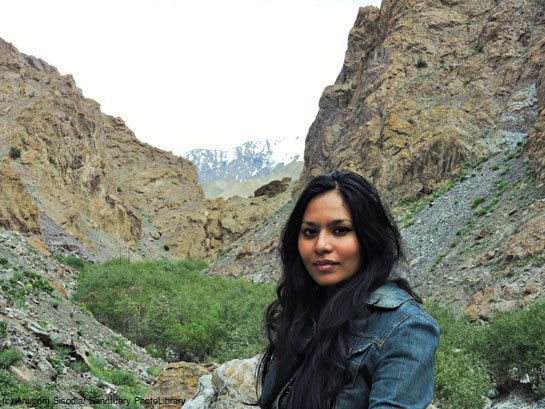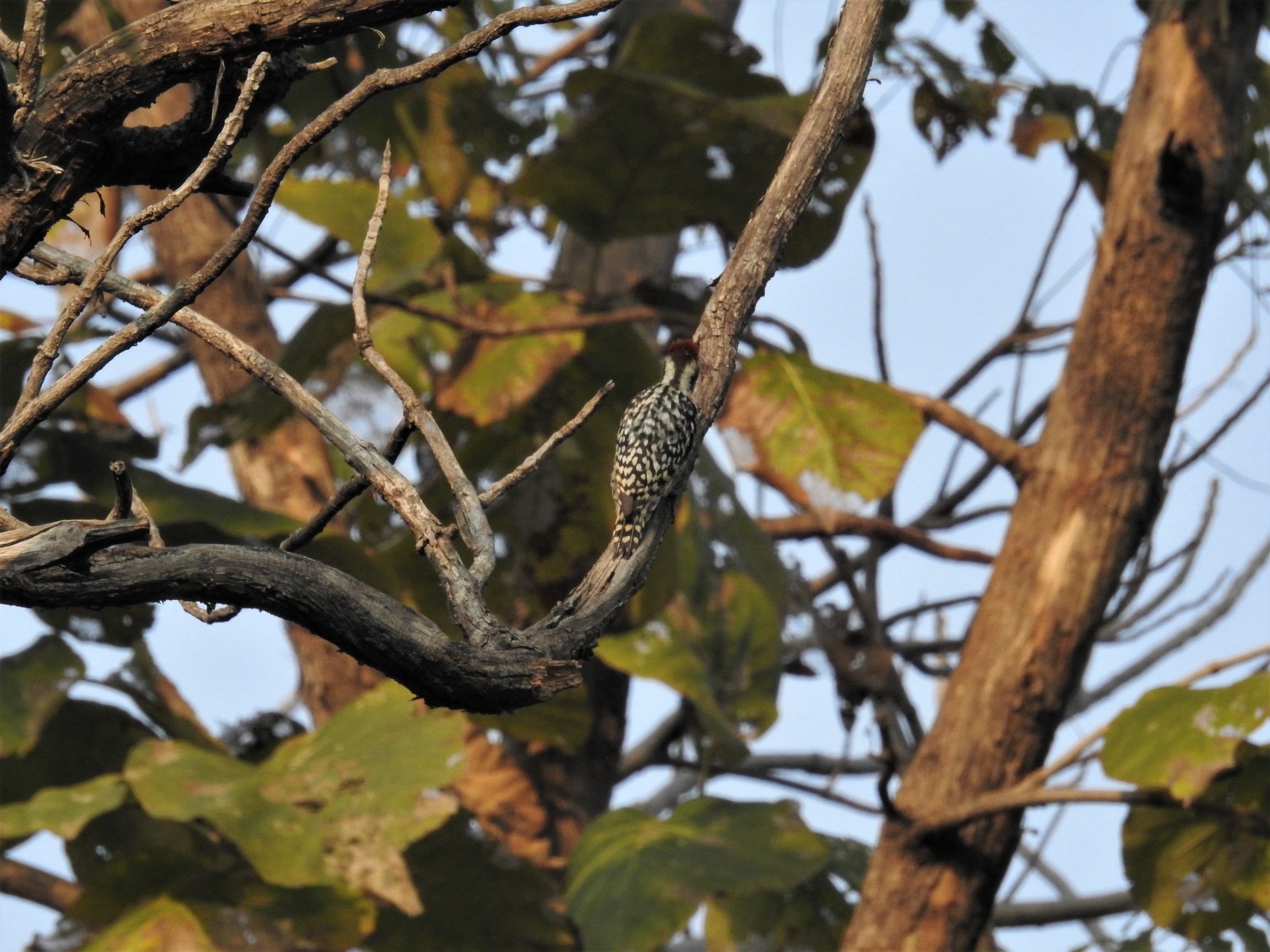We would perhaps value food more if we have to really search for it. Learn from a woodpecker
The tree may not mind the scars the woodpecker leaves; and the woodpecker perhaps does not mind hundreds of attempts before it gets a single insect that bores into the heartwood of a tree


The sun was about to go down. I had emerged from teaching an exhausting class, and I felt the forest was going to sleep without my permission. I hadn’t had enough time that day in the wild, and I wasn’t done seeing all the birds, insects and animals for the day. I was gazing at a tall tree of Central Indian forest, a salai tree, bark white and grey, marked with a hundred scars.
I was wondering where the battle-scars came from, when I heard a curious sound. Tek-tek-tek-tek. Pause. Then again: tek tek tek tek. The sound of a nail being hammered with great precision high up in the sky. But who would be hammering a nail four storeys above the ground? It took me a second to realize that watching birds is also about sound: the sound like the nail-hammer was giving away the identity of the bird. This was the Kathphodva (literal meaning: breaker of wood).
The English language has a similar emotion for this bird — it is called the Woodpecker. Woodpeckers get their name from their difficult way of getting food. They excavate food — insects — from the hardwood of trees. They peck-peck-peck at tree trunks and large branches for a single insect. You will often hear a woodpecker before you can see it. If you do get to see it, you may notice it hardly looks up. Instead, it has its eyes fixed devotedly on where it is pecking, and it goes up and around a tree in a spiral flourish; packing in as many steps as possible to take in the breadth of a tree trunk.
I imagine that a tree is like a building. The levels are like storeys. There is a lower level, mostly of a trunk. At a higher storey, there are branches that jut out, forks in the branches — choices of roads to take. At a very high level, you have tapers in the branch, leaves, and a good view. A woodpecker negotiates the storeys of a tree with the intimacy of a trapeze artist in a circus — in practised flourishes and bobs.

I have often found two woodpeckers on the same tree, doing their little circus act of taking steps vertically or diagonally up a rough tree trunk, heads bobbing, beaks pecking. And it’s almost like the tree trunk is the floor and we are the odd ones, gravitating to a different orbit.
The relationship of wood to woodpecker is also a gravitational force of attraction. It’s like a salon service, the most intimate and sophisticated kind. The tree may not mind the scars the woodpecker leaves, and the woodpecker perhaps does not mind hundreds of attempts before it gets a single insect that bores into the heartwood of a tree. Often, such insects will kill trees. So, the woodpecker is also known as the tree doctor. And what a flamboyant doctor.
The Lesser Goldenback woodpecker has a body of molten gold and a red cap. When looking for woodpeckers, I have often been able to just see the cap, as the bird continues a solemn inspection, head bent. Their devotion towards finding food — is not by stealing or discovery, but by an active search. Something like a treasure hunt.
I find myself thinking harder about this.
With the advent of easily available food, we eat too much. And with delicious, instant food packed with preservatives that magically create engorged cakes and spicy noodles in seconds, we definitely eat things we shouldn’t.
Perhaps I would value food more if I had to really search for it. Perhaps I would eat less of things I don’t need to; because an austere search for nourishing food cancels out any frills, any trimmings, any side dishes, any junk.

The next day, I am up early in the morning. At this time of the day, I am looking for smaller birds, migratory Taiga Flycatchers and Orange-headed thrushes, little birds that fly big distances to come to India. And I do see a little bird, but it doesn’t look up. Instead, it is looking with a kind of love at the tree it is on, with the focus of a scientist and the gaze of a naturalist. I never get to see its head, but I know from the back that this is the Yellow-crowned woodpecker, with a yellowish-red head and a black and white spotted body.
I am once again struck by the blazing focus of the bird, and how hard it works for finding something as small as a single insect.
I wonder now about excavating some things in me that I don’t need, finding them, uprooting them, and discarding them. I am bruised by the Delhi election. My mind has been full of election news, one poisonous propaganda swirling after the other. The result has been more divisions than discussions and categorizing those that don’t agree with us as regressive. This is a prejudice, I realise. I have to be able to see people and not just prejudices. I want to reach into myself and uproot these prejudices, just as damaging and seductive as food preservatives. Prejudices don’t preserve me, they erode me.
I want to be more like the woodpecker: more substance and less of the unnecessary. Reaching in and going to the heart of the matter — to what nourishes rather than depletes. I want the gaze of Kathphodva, head down and steadfast even as the winds of propaganda shake the forks in the road.
Neha Sinha is working with the Bombay Natural History Society.
(Views are personal)

